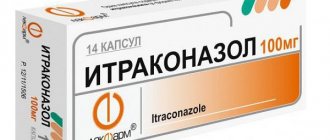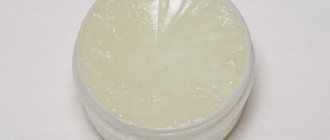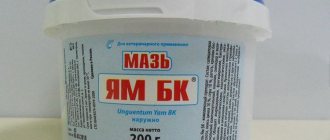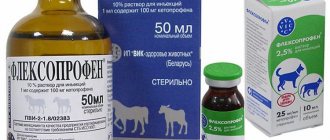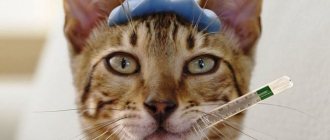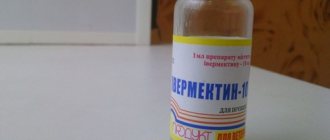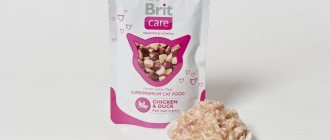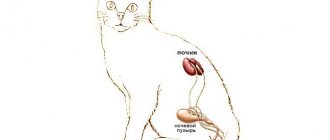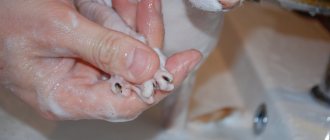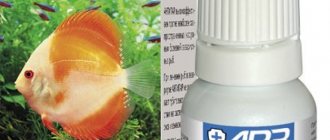Aversectin ointment for cats is an antiparasitic medication that helps in the fight against tick-borne infestations. A medical product tested by time and people, safe for mammals, birds, and rodents.
Aversectin ointment is a veterinary drug that is prescribed by a doctor and used at home. This product is used to treat animal skin lesions caused by ear mites, fleas, lice and other pathogens of demodicosis in cats, dogs, and birds.
pharmachologic effect
The ointment is classified as a systemic and contact insectoacaricide. The composition includes aversectin C, which is active against larvae and mature stages of individual development of ticks. Affects insects that live on cats and dogs. The insectoacaricide acts where parasites are most concentrated. Penetrates the skin, hair follicles, sebaceous glands. Interferes with the transmission of impulses between nerve endings and muscle cells in arthropods. Blocking the transmission of nerve impulses provokes paresis with subsequent death of insects. After absorption, the highest concentration of the active substance in the blood serum is observed approximately on the 5th day. It is excreted in the stool within two weeks. The ointment form of aversectin is 100% effective against ectoparasites. The drug belongs to low-hazardous substances. Does not have embryotoxic, teratological, or local irritating effects. Cats react well to it.
Indications for use, methods of administration, dosage
Aversectin ointment is a universal insectoacaricidal drug with systemic action. The product has pronounced activity against mature and larval stages of sarcoptic and demodectic mites. Activity is also manifested in relation to insects that parasitize dogs, cats and some fur-bearing animals - fleas, lice, lice.
A mixture of avermectins provokes an increase in the flow of chlorine ions through the nerve and muscle cellular structures of parasitic organisms. This ultimately leads to disruption of nerve conduction in ectoparasites, paralysis and their further death. Applying the ointment to the affected areas promotes close contact with parasites that have settled in the sebaceous glands, hair follicles or on the skin. The maximum amount of aversectin C in the blood plasma is achieved 2-4 days after the start of use.
Insectoacaricidal ointment is a low-hazard substance. In moderate doses it does not irritate the skin. Also, no effect of the active substance aversectin C on the intrauterine development of fetuses was revealed.
Indications for the use of Aversectin ointment are lesions in dogs and cats:
- sarcoptic mange;
- notoedrosis;
- otodectosis;
- demodicosis;
Before applying the ointment to the affected areas of the body, it is necessary to cut the hair and remove the crusts of dried exudate formed during the disease. Next, apply and distribute the ointment evenly using a cotton swab. In order to prevent animals from licking the medicine, it is recommended to purchase a special immobilizing collar. The dog may be wearing a muzzle during application until the ointment is absorbed.
The course of treatment depends on the type of parasitic disease and the degree of neglect of the pathological process. After a thorough clinical examination, the veterinarian will prescribe an individual course of therapy. As a rule, treatment lasts at least 5 days, followed by a break for a week and repeating the course.
Contraindications and precautions
After treatment with aversectin ointment for cats, reviews from owners are positive. With an adequate method of application, no side effects are observed. But in some cases it is not recommended to use the product. Contraindications: sensitivity to averxetine; pregnancy and lactation; kittens up to 2 months old; infectious pathologies. The drug should not be used on weakened or convalescent pets. Skin irritation indicates intolerance. This determines further actions. The application of the ointment is stopped, the product is removed with a napkin and washed off.
Contraindications
The use of Aversectin ointment is contraindicated:
- kittens under 2 months of age;
- sick and weak animals, in the postoperative period;
- females during pregnancy and lactation;
- exhausted animals;
- during the course of infectious diseases.
As a rule, Aversectin ointment does not cause adverse reactions. If there is an individual intolerance to the components of the drug, skin irritation may occur. It is advisable to avoid violating the animal’s processing regimen. In case of an overdose, general weakness, tremors, and active salivation are possible.
Precautionary measures
When working with a veterinary drug, the owner must observe safety precautions and hygiene. The owner must adhere to certain rules: Use gloves. Do not drink liquids and postpone eating while applying the ointment. After the procedure, wash your hands in warm soapy water. Contact with mucous membranes and human skin requires rinsing with a sufficient amount of running water. In case of accidental ingestion, you must take an adsorbent (enterosgel) and contact a medical facility.
It is not recommended to pet the cat or let it near children for 24 hours after treatment. Empty containers of the drug should not be left for household needs.
special instructions
If, during the use of Aversectin ointment, an animal experiences irritation on the skin or other allergic reactions occur, you should immediately stop treatment, remove the product with a piece of cotton wool and rinse the skin with plenty of water.
When working with the drug, it is forbidden to consume food or drinks, or smoke. Be sure to use disposable gloves.
Within 24 hours after treatment, it is not recommended to pet the animal and allow small children near it.
If the drug gets on the mucous membranes or skin, rinse it off immediately with plenty of water.
The use of empty ointment packaging for household purposes is prohibited.
It is not recommended to use the product in conjunction with avermectin-containing drugs without prior consultation with a veterinarian.
Storage conditions
Aversectin ointment should be kept in its original packaging, away from children. Store at temperatures from 0° to + 20° C in a dry place, protected from direct sunlight.
Remedies for demodicosis: ointments, creams, gels, solutions
Visit the profile section of our Medical Examination forum or leave your feedback in the comments below. More opinions means more useful information, it will be useful to someone. If there are good and interesting videos on the topic of the article, write and I will insert them into this publication.
Instructions for use
Before using the ointment, you must thoroughly clean the affected areas of dirt and scabs. It is good to clean out the discharge from the ears, wash the skin, wipe dry and cut off the hair, grabbing a piece of healthy skin about 1 centimeter in size.
The drug is applied directly to the skin using a cotton swab or medical spatula. If the affected area is too large, treatment should be done in two approaches one day apart. Be sure to use rubber gloves when applying.
Next, you need to thoroughly rub the medicine onto the affected areas of the skin. If you need to treat the ear canal with ointment, after filling the auricle, you need to fold it into an envelope and distribute the drug with massaging movements.
Even if only one ear is affected, both need to be treated.
Information on the frequency of use and intervals is presented in the table below.
| Disease | Application | Additional Information |
| Demodicosis in the squamous form Demodicosis in the pustular form Demodecosis in the mixed form | 3 times with a difference of 5-7 days 7 times with a difference of 7 days 7 times with a difference of 7 days. With a wide lesion, 7 times with a difference of 5 days. | If the disease occurs in a pustular or mixed form, it is necessary to use Aversectin ointment in combination with antibacterial and antifungal therapy, as well as use immunomodulators |
| Sarcoptic mange | 2 times with a difference of 5-7 days | For ease of use, it is recommended to heat the drug in a water bath. |
| Notoedrosis | 2 times with a difference of 5-7 days | |
| Trichodectosis | 2 times with an interval of 7-10 days | The ointment is vigorously rubbed against the grain in places inaccessible to licking. To prevent re-infection, it is recommended to sterilize care items and change the bedding. |
| Otodectosis | 2 times with an interval of 7-10 days | It is also recommended to melt the drug in a water bath and place it warm in the ear canal. |
In order to prevent the ointment from entering the stomach, it is recommended to carry out treatment in places inaccessible to licking. If large areas of skin need to be treated, it is advisable to use a veterinary collar. If necessary, the veterinarian may continue the course of treatment at his own discretion.
Side effects and contraindications, special instructions
There are no side effects with proper use of Aversectin ointment. All animals tolerate the insectoacaricidal drug well. In rare cases, if there is an individual intolerance to one of the components of the drug, itching and irritation on the skin may occur.
Contraindications to the use of insectoacaricidal ointment are:
- diseases in cats and dogs of an infectious nature in the acute stage;
- severely emaciated and weakened pets;
- cats and dogs during the period of gestation and lactation;
- small kittens and puppies up to 8 weeks.
If a specific allergic reaction occurs on the skin of an animal after applying Aversectin ointment, the treatment is stopped, the product is removed with a cotton swab and washed off with warm water and soap. If necessary, contact a veterinarian for help. A competent doctor will recommend antihistamines.
Indications for use
Aversectin ointment is effective for otodectosis, notoedrosis, entomosis, sarcoptic mange and demodicosis in wild animals, dogs, cats, rabbits, parrots and other birds. The drug should be used according to the instructions.
The medicine is applied to hair-free areas, preferably degreased and cleaned (to do this, they must first be wiped with alcohol). The animal may try to lick the drug from the skin, so it will be necessary to put a muzzle on the pet or a cervical collar.
For more severe diseases (demodicosis, sarcoptic mange, notoedrosis), treatment will need to be continued. The drug will need to be used 2 or 4 more times, until complete recovery, at intervals of a week. There are severe cases of illness when the medicine is applied every other day.
If parasites affect the hearing organs, you need to clean them before applying Aversectin ointment. The drug should be rubbed in carefully so as not to damage already wounded skin. An animal undergoing treatment should not be petted or allowed near children for 24 hours.
An allergic reaction to the substance is possible not only in animals, but also in humans. Before you start treating an animal with Aversectin ointment, you must consult with an experienced veterinarian. His recommendations will help avoid allergic reactions and other complications.
Operating principle
The main advantage of the ointment is that the treatment does not harm the skin. The drug affects chlorine ions in insect membranes. The main task of Aversectin ointment is to penetrate the glutamate-sensitive C1 channels. The functioning of impulses in the nerve fiber is disrupted when exposed to the above ions. The consequences of the drug are that the parasites die. The medicine should be used only in areas where the skin is affected by parasites. The drug must be applied with a special spatula (you can buy it at the pharmacy), a glass rod, or a plastic spoon.
